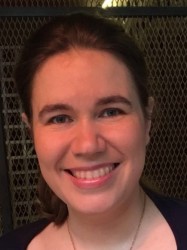

The National Heart and Lung Institute shares it gratitude and reflects on Professor David Firmin’s 30 years of service.
David Firmin, Professor of Biomedical Imaging at the National Heart and Lung Institute, is moving on from the Department after 30 years. Professor Firmin’s involvement in Cardiovascular Magnetic Resonance began in 1982 and he is one of the founding members of the Royal Brompton Unit which opened in 1984. His major contributions to the field include the development of quantitative phase contrast velocity imaging for MRI.
"Many more firsts were to follow, but David will always be known as the first physicist who made flow work in CMR" Professor Dudley Pennell
In addition Professor Firmin is the Head of Physics in Cardiovascular Magnetic Resonance (CMR) at Royal Brompton Hospital, and has led on a number of pioneering advances in atheroma imaging, rapid and interactive cardiovascular MR, coronary angiography, myocardial perfusion imaging and tissue characterisation.
David’s colleagues Professor Dudley Pennell and Dr Sonia Nielles-Vallespin shared their thoughts on David’s time with NHLI.
A career of firsts
"Professor David Firmin retires in December 2020 after a long and distinguished career as the Head of Physics in CMR at Royal Brompton Hospital (RBH). David joined RBH in 1983 and worked with Donald Longmore to set up the first CMR Unit in the world in a disused building at RBH that had once housed the Estates Planning department. Following the personal intervention of Margaret Thatcher to grant research funds, the first CMR scanner was installed with the then peak field of 0.5 Tesla, which is low by modern standards, but was eminently suitable for developmental physics research" comments Dudley Pennell.
"David set-up the ECG triggering from scratch, programmed the first cardiac sequences for the scanner, and pioneered the use of gradient-echo phase techniques to measure cardiovascular flow in-vivo. This was a true breakthrough that enabled a first-in-man publication in the Lancet in 1985 establishing that CMR was accurate in both linear and volumetric dimensions. Further bespoke enhancements to the gradient systems power allowed the echo-time of the velocity sequences to be dropped to then extremely low value of 3.6ms, allowing the unheard-of capability at the time of recording velocities through the aortic valve of up to 6 metres per second. David was heard cheering from the scanning console the very first time that the sequence ran correctly. Many more firsts were to follow, but David will always be known as the first physicist who made flow work in CMR".
Mentoring and Mansell
Sonia Nielles-Vallespin adds "David is a true pioneer in the field of Cardiovascular Magnetic Resonance, yet he is tremendously humble. Generations of CMR physicists around the world have been trained by him. I am privileged to call him a mentor and a friend. He has believed in me and supported me and shaped me as a scientist. Always kind, always willing to listen and always giving excellent advice and support, he is loved by everyone who ever worked with him. He is also tons of fun, joining everyone on Friday afternoon at the local pub, taking the team to the Chelsea Football Club to watch a football game, and even dressing up as Santa Claus for the CMR Unit’s Christmas party. He will be sorely missed."
Dudley Pennell continues "David is a much-loved colleague, who developed grey hair in his 20’s that only enhanced his avuncular personality. Always generous with his time and counsel, he calmly supervised and mentored a generation of young physicists and clinical scientists alike through their PhDs".
"He was always excited by the latest pit stops and burst tyres in Formula 1 racing and had a notable affection for 'Brummy' Nigel Mansell, especially on him winning the F1 championship in 1992. Attending Silverstone with David was quite an experience. Up to Kettering to stay the night before, then up at 5am to be first in the queue to enter the racetrack and secure the perfect spot amongst Mansell’s adoring fans. Bearing in mind the race started at 2pm, it was a long wait for those of us whose level of enthusiasm was less than gigantic, but David didn’t notice or didn’t mind some people sleeping off the early rise in the car. Then the race started and the memories that followed were unforgettable - Mansell (The Lion) overtaking late in the race to win, and the acrid smell of what was described as “cordite” in the air: Terrible and cloying to the novices, but loved by David!".
Well wishes
Everyone who knows David will be wishing him a very happy retirement with his wife Jackie and two children. He will retain an Emeritus title with NHLI and will always be welcome back for coffee, the exchange of ideas, and reminiscing of tales of the birth of CMR.
Article text (excluding photos or graphics) © Imperial College London.
Photos and graphics subject to third party copyright used with permission or © Imperial College London.
Reporters

Sonia Nielles-Vallespin
National Heart & Lung Institute

Contact details
Email: s.nielles-vallespin@imperial.ac.uk
Show all stories by this author
Dudley Pennell
National Heart & Lung Institute

Contact details
Tel: +44 (0)20 7351 8810
Email: d.pennell@imperial.ac.uk
Show all stories by this author

Ms Helen Johnson
National Heart & Lung Institute

Contact details
Tel: +44 (0)20 7594 6843
Email: helen.johnson@imperial.ac.uk
Show all stories by this author


